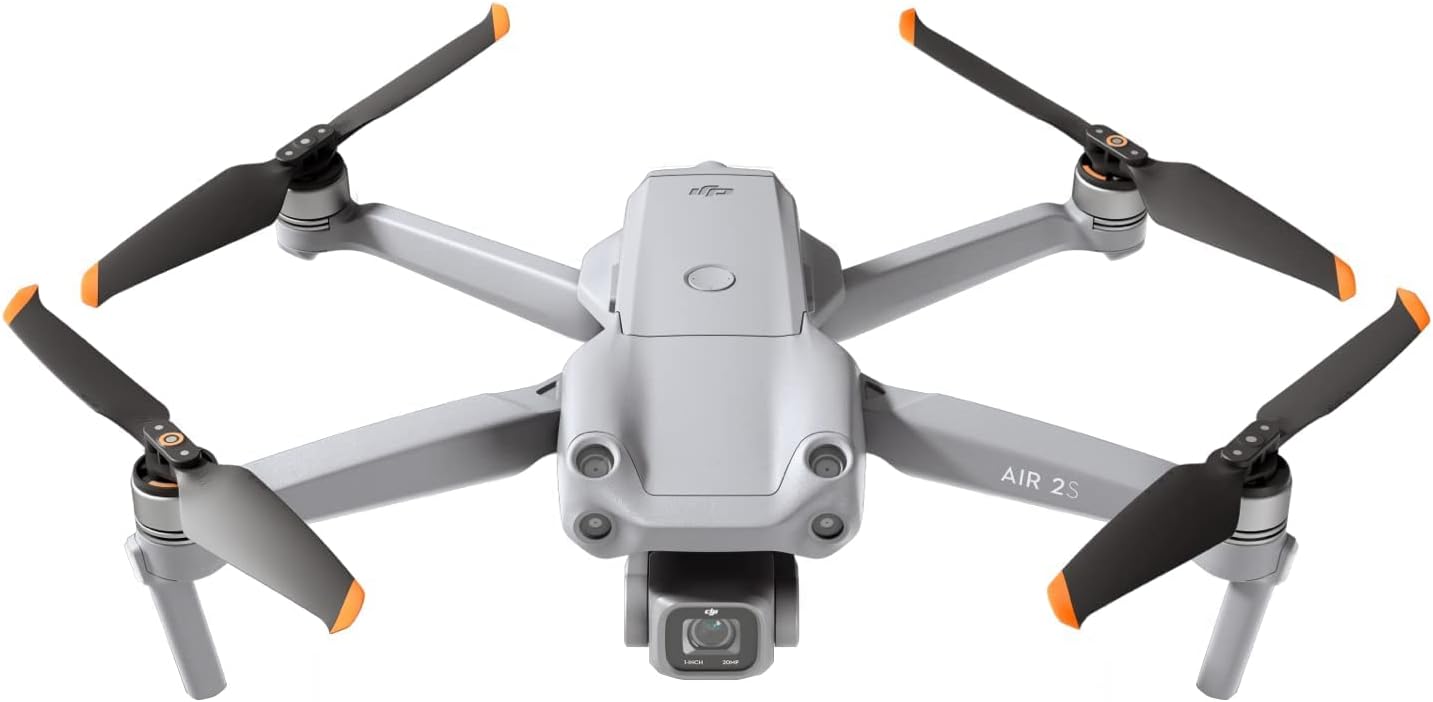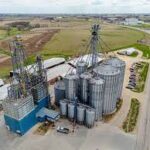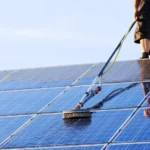Using Drone in Silo Restoration, Inspection or Assessment
 Using drones in silo restoration, inspection or assessment offers several advantages and can streamline various aspects of the process.
Using drones in silo restoration, inspection or assessment offers several advantages and can streamline various aspects of the process.
A drone, also known as an inspection drone or UAV (Unmanned Aerial Vehicle), is a remotely operated aircraft equipped with various sensors, cameras, and other technologies designed specifically for inspecting structures, infrastructure, and other assets.
These drones are commonly used in industries such as construction, agriculture, energy, and infrastructure maintenance. Here’s an elaboration on how drones are employed in different stages of silo restoration:
Inspection and Assessment
Drones equipped with high-resolution cameras and sensors can conduct comprehensive inspections of the exterior and interior surfaces of the silo. They can capture detailed images and videos, allowing inspectors to assess the condition of the structure without the need for scaffolding or manual entry, which can be time-consuming and hazardous. Drones can identify cracks, corrosion, or other damage more efficiently, providing valuable data for the restoration plan.
Monitoring Progress
Throughout the restoration process, drones can be deployed to monitor progress and track changes in the silo’s condition. Regular aerial surveys enable project managers to assess the effectiveness of repairs, identify any new issues that arise, and ensure that work is proceeding according to schedule. This real-time monitoring helps in making informed decisions and adjustments to the restoration plan as needed.
Safety Inspections
Drones enhance safety by minimizing the need for personnel to work at heights or in confined spaces. Instead of sending workers into potentially hazardous environments, drones can navigate the silo’s interior and exterior autonomously, reducing the risk of accidents and injuries. They can access areas that may be difficult or dangerous for humans to reach, such as elevated platforms or narrow passages.
Thermal Imaging
Some drones are equipped with thermal imaging cameras, allowing them to detect temperature variations that may indicate structural defects, moisture infiltration, or insulation problems. Thermal imaging can help identify hidden issues that might not be visible to the naked eye, enabling early detection and intervention to prevent further damage.
Documentation and Reporting
Drones capture detailed data, including images, videos, and geospatial information, which can be used to create comprehensive documentation of the restoration project. This documentation serves as a valuable record of the silo’s condition before, during, and after restoration, aiding in quality assurance, compliance reporting, and future maintenance planning.
Access to Remote or Hazardous Sites
In cases where silos are located in remote or inaccessible areas, drones provide a cost-effective and efficient means of conducting inspections and repairs. They can navigate challenging terrain, fly over obstacles, and access areas that would otherwise require specialized equipment or personnel. This capability is particularly useful for silos located in industrial facilities, agricultural sites, or remote storage facilities.
Environmental Monitoring
Drones equipped with environmental sensors can monitor air quality, detect pollutants, or assess environmental conditions around the silo. This data helps ensure compliance with regulatory requirements and enables proactive measures to mitigate any environmental impacts associated with the restoration activities.
Precision Applications
In addition to inspection and monitoring, drones can be used for precision applications such as applying protective coatings, sealants, or corrosion inhibitors to specific areas of the silo. Payloads can include sprayers or dispensing systems that deliver materials with accuracy and consistency, optimizing the effectiveness of restoration treatments while minimizing waste.
What is the role of drones in silo inspection and maintenance
Drones play a crucial role in conducting comprehensive inspections of silos, facilitating routine maintenance, and monitoring structural integrity. They are equipped with specialized cameras and sensors to capture detailed imagery, identify defects, and assess the condition of silo structures without the need for manual inspection.
What types of drones are used for silo inspection
Various types of drones can be used for silo inspection, including multirotor drones, fixed-wing drones, and hybrid drones. Multirotor drones are commonly preferred for their maneuverability and ability to hover in place, while fixed-wing drones offer longer flight times and broader coverage for larger silos or facilities.
How do drones assist in silo inspection
Drones equipped with high-resolution cameras, thermal imaging sensors, and LiDAR technology can capture detailed visual data of silo structures, identify cracks, corrosion, or other damage, assess insulation integrity, and detect potential safety hazards. They provide inspectors with real-time insights and accurate data for making informed decisions.
What are the benefits of using drones for silo inspection
Using drones for silo inspection offers several benefits, including:
- Improved safety by reducing the need for personnel to work at heights or in confined spaces
- Cost-effectiveness by minimizing downtime and labor costs associated with traditional inspection methods
- Enhanced efficiency with rapid data collection, analysis, and reporting
- Increased accuracy in identifying defects and assessing structural integrity
- Accessibility to hard-to-reach areas of the silo, including elevated sections and internal compartments
Can drones perform internal inspections of silos
Yes, drones equipped with specialized payloads and sensors can navigate the interior of silos to conduct inspections. These drones may utilize obstacle avoidance technology and maneuvering capabilities to navigate through tight spaces, assess interior surfaces, and identify defects or obstructions.
Are there any regulatory considerations for using drones in silo inspection
Depending on the location and jurisdiction, there may be regulatory requirements or restrictions governing the operation of drones for commercial purposes, including inspection activities. It’s essential to comply with relevant aviation regulations, obtain necessary permits or licenses, and adhere to safety guidelines when deploying drones for silo inspection.
How are drone inspection data processed and analyzed
Drone inspection data, including imagery, video footage, and sensor readings, can be processed and analyzed using specialized software tools. These tools may include photogrammetry software for creating 3D models, thermal imaging analysis software for detecting temperature variations, and GIS (Geographic Information System) software for spatial analysis and mapping.
Can drones be used for ongoing monitoring of silo structures
Yes, drones can be deployed for ongoing monitoring and surveillance of silo structures to track changes in condition over time, identify emerging issues, and assess the effectiveness of maintenance interventions. Regular aerial inspections enable proactive maintenance planning and help prevent costly repairs or failures.
What are the limitations of using drones for silo inspection
While drones offer many advantages for silo inspection, they also have some limitations. Factors such as limited flight endurance, weather conditions, and regulatory restrictions may impact the feasibility and effectiveness of drone-based inspections. Additionally, drones may not be suitable for inspecting certain types of silo structures or environments.
How can I get started with using drones for silo inspection
To get started with using drones for silo inspection, consider partnering with a reputable drone service provider or investing in drone technology and training for in-house operations. Evaluate your specific inspection needs, assess regulatory requirements, and develop a comprehensive plan for integrating drones into your silo maintenance workflow.
Other application area
- Maritime
- Oil and Gas
- Infrastructure
- Power Generation
- Port Facilities
- Process Plants
[UPDATES] Introducing the latest technology
Scout 137 is designed for GPS-denied, hostile environments with little or no ambient light. Atmospheres may be toxic, with little oxygen. There may be dust, debris, risk of falling and entrapment. Such places are often not suitable for human entry. But they’re still in need of inspection and structural integrity assessment.
It’s easy to find motivation for using indoor drones instead of human entry in many indoor industrial inspection tasks. But still, getting the right tool for the job is vital. To perform a safe inspection and gather good data, you need a tool that lets you focus on the job, provides the best possible data and enables easy sharing and reporting.
The key benefits:
- Unlimited Flight Time – The tether system allows for a stress-free inspection with no restrictions to flight time, and provides a robust data link
- Lidar-based Indoor Navigation – 3D Lidar and laser sensors provide indoor navigation, 3D environment mapping and enhanced collision prevention
- “No-Entry” Inspection – The wired data link and the situational awareness provided by the Lidar enable flexible drone operation. The drone can be operated outside of line-of-sight, without the need to enter confined spaces
- Real time Remote Participation – Live streaming and cloud storage allows remote inspection support and expert evaluation.
- Enhanced Situational Awareness – Location tagged inspection findings are presented in a split-screen view, showing the video footage and the 3D map of your asset simultaneously.
- High Resolution Inspection Playback – Raw video footage is automatically optimized for smooth playback and easy sharing. Flight paths are clickable and visualized in 3D for easy inspection review and documentation of coverage.


